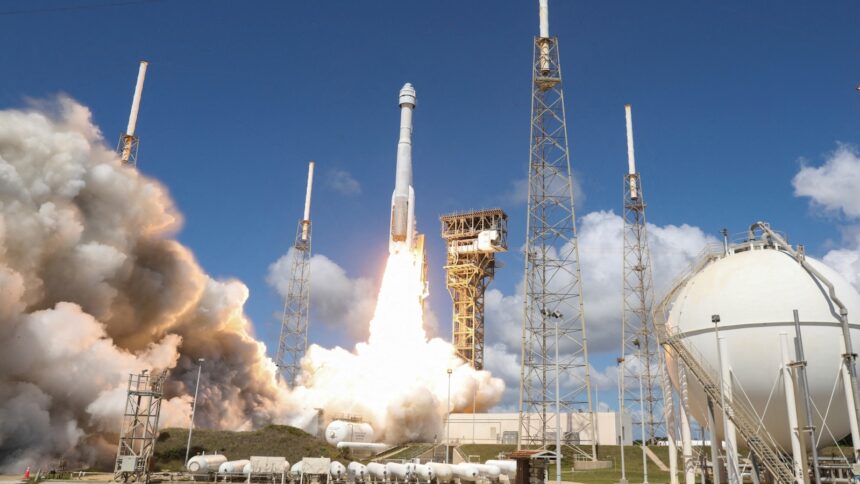NASA astronauts who boarded the first crewed flight into space on Boeing’s Starliner will participate in a press conference on Wednesday morning.
Flight commander Barry “Butch” Wilmore, 61, a former US Navy captain, and Sunita Williams, 58, a former Navy service member, the pilots of the plane, which is currently on the International Space Station (ISS), are ready to answer. questions about test flights and missions.
Wilmore and Williams lifted off on June 5 from the Cape Canaveral Space Force Station in Florida and boarded the ISS on June 6.
The pair was originally scheduled to spend a week on the ISS to evaluate the spacecraft and its systems and return on June 14. However, the Starliner has experienced several mechanical problems, including helium leaks and thruster problems, leaving the astronauts stranded on the ISS without a plane. return date.
NASA confirmed that Wilmore and Williams were safe while still on the ISS with the crew of Expedition 71. The agency said the ISS has plenty of supplies in orbit, and that the station’s schedule is open until mid-August.

An undated NASA handout image released on July 2, 2024 shows NASA Boeing Crew Flight Test astronauts (from top) Butch Wilmore and Suni Williams inside the vestibule between the forward port on the International Space Station’s Harmony module and the Boeing Starliner spacecraft.
Handout/NASA/AFP via Getty Images
“I want to make it clear that Butch and Suni are not stranded in space,” said Steve Stich, NASA’s Commercial Crew program manager, during a June 28 teleconference. “Our plan is to continue to return to the Starliner and return home in due time.”
NASA and Boeing said Wilmore and Williams were “integrated” with the Expedition 71 crew on the ISS and assisted the crew in station operations as needed, as well as completing the “goals” required for NASA’s Starliner certification.
“Since their arrival on June 6, Wilmore and Williams have completed half of all hands-on research time spent on the space station, allowing their colleagues to prepare for the departure of Northrop Grumman’s Cygnus spacecraft,” NASA wrote in a recent update.
This week, a team at NASA’s White Sands Test Facility in New Mexico conducted a ground test of the Starliner thrusters, creating conditions similar to those of the spacecraft en route to the ISS, according to an update on Boeing’s website.
The test will simulate the docking of the Starliner, when some of the thrusters fail, and what the thrusters will experience from undocking to landing back on Earth.
“We really want to understand the thruster and how to use it in the airplane,” Dan Niedermaier, Boeing’s lead engineer for thruster testing, said in a statement. “We will learn a lot from this thruster firing that will be useful for the rest of the Crew Flight Test and future missions.”
The Starliner had run into problems before its launch. The flight test was originally scheduled for May 6, but was cleared after a problem with an oxygen valve on a rocket from United Launch Alliance, which builds and operates the rocket that launches the Starliner spacecraft into orbit.

The United Launch Alliance Atlas V rocket carrying two astronauts on the Boeing Starliner-1 Crew Flight Test (CFT), launches on a mission to the International Space Station, in Cape Canaveral, Fla., June 5, 2024.
Joe Skipper / Reuters
A new launch date was then set for May 25, but then a small helium leak was discovered in the Starliner service module, which contains support systems and instruments to operate the spacecraft.
A helium leak and thruster problems threatened to delay the Starliner’s docking, but it worked. Five days after docking at the ISS, NASA and Boeing announced that the spacecraft had suffered five “minor” helium leaks, but added that it still had enough helium left for the return mission.




